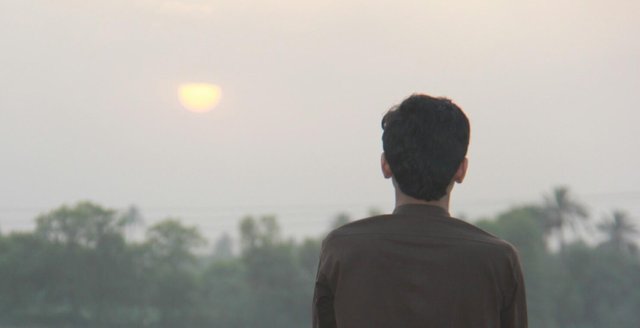Photography Tips
1:  Use the Rule of Thirds
Use the Rule of Thirds
top-ten-digital-photography-tips1
To use the rule of thirds, imagine four lines, two lying horizontally across the image and two vertical creating nine even squares. Some images will look best with the focal point in the center square, but placing the subject off center at one of the intersecting points of the imaginary lines, will often create a more aesthetically composed photograph.
When a photograph is composed using the rule of thirds the eyes will wander the frame. A picture composed by the rule of thirds is usually more interesting and pleasing to the eye.
2:  Avoid Camera Shake
Avoid Camera Shake
top-ten-digital-photography-tips2
Camera shake or blur is something that can plague any photographer and here are some ways to avoid it.
First, you need to learn how to hold your camera properly; use both hands, one around the body and one around the lens and hold the camera close to your body for support.
Also, for handheld shooting, make sure that you are using a shutter speed that is appropriate for your lens’ focal length. The rule of thumb is not to shoot at a shutter speed that is slower than your focal length:
1 / Focal Length (in mm) = Minimum Shutter Speed (in seconds)
So, as an example, if you’re using a 100mm lens, then your shutter speed should be no lower than 1/100th of a second.
Use a tripod or monopod whenever possible. In lieu of this, use a tree or a wall to stabilize the camera.
3:  The Sunny 16 Rule
The Sunny 16 Rule
top-ten-digital-photography-tips3
The idea with the Sunny 16 rule is that we can use it to predict how to meter our camera on a sunny outdoor day. So, when in that situation, choose an aperture of f/16 and 1/100th of a second shutter speed (provided you are using ISO 100). You should have a sharp image that is neither under or over exposed.
This rule is useful if you don’t have a functioning light meter or if your camera doesn’t have an LCD screen to review the image.
4:  Use a Polarizing Filter
Use a Polarizing Filter
top-ten-digital-photography-tips4
If you can only buy one filter for your lens, make it a polarizer.
This filter helps reduce reflections from water as well as metal and glass; it improves the colors of the sky and foliage, and will help give your photos the WOW factor. It will do all that while protecting your lens. There’s no reason why you can’t leave it on for all of your photography.
The recommended type of polarizer is circular because these allow your camera to use TTL (through the lens) metering such as auto exposure.
We recommend Hoya Polarizer Filters for the best combination of performance and price.
5:  Create a Sense of Depth
Create a Sense of Depth
top-ten-digital-photography-tips5
When photographing landscapes it really helps to create a sense of depth, in other words, make the viewer feel like they are there.
Use a wide-angle lens for a panoramic view and a small aperture of f/16 or smaller to keep the foreground and background sharp. Placing an object or person in the foreground helps give a sense of scale and emphasizes how far away the distance is.
Use a tripod if possible, as a small aperture usually requires a slower shutter speed.
6:  Use Simple Backgrounds
Use Simple Backgrounds
top-ten-digital-photography-tips6
The simple approach is usually the best in digital photography, and you have to decide what needs to be in the shot, while not including anything that is a distraction.
If possible, choose a plain background – in other words, neutral colors and simple patterns. You want the eye to be drawn to the focal point of the image rather than a patch of color or an odd building in the background. This is especially vital in a shot where the model is placed off center.
7:  Don’t Use Flash Indoors
Don’t Use Flash Indoors
top-ten-digital-photography-tips7
Flash can look harsh and unnatural especially for indoor portraits. Therefore, there are various ways you can take an image indoors without resorting to flash.
First, push the ISO up – usually ISO 800 to 1600 will make a big difference for the shutter speed you can choose. Use the widest aperture possible – this way more light will reach the sensor and you will have a nice blurred background. Using a tripod or an I.S. (Image Stabilization) lens is also a great way to avoid blur.
8:  Choose the Right ISO
Choose the Right ISO
top-ten-digital-photography-tips8
The ISO setting determines how sensitive your camera is to light and also how fine the grain of your image. The ISO we choose depends on the situation – when it’s dark we need to push the ISO up to a higher number, say anything from 400 – 3200 as this will make the camera more sensitive to light and then we can avoid blurring. On sunny days we can choose ISO 100 or the Auto setting as we have more light to work with.
9:  Pan to Create Motion
Pan to Create Motion
top-ten-digital-photography-tips9
If you want to capture a subject in motion, then use the panning technique. To do this, choose a shutter speed around two steps lower than necessary – so for 1/250, we’d choose 1/60. Keep your camera on the subject with your finger half way down on the shutter to lock the focus and when ready, take the photo, remembering to follow them as they move.
Use a tripod or monopod if possible to avoid camera shake and get clear movement lines.
10:  Experiment with Shutter Speed
Experiment with Shutter Speed
top-ten-digital-photography-tips10
top-ten-digital-photography-tips11
Don’t be afraid to play with the shutter speed to create some interesting effects.
When taking a night time shot, use a tripod and try shooting with the shutter speed set at 4 seconds. You will see that the movement of the object is captured along with some light trails. If you choose a faster shutter speed of say 1/250th of a second, the trails will not be as long or bright; instead you will freeze the action.
This technique works well if you are using a tripod and if you are photographing a moving object.